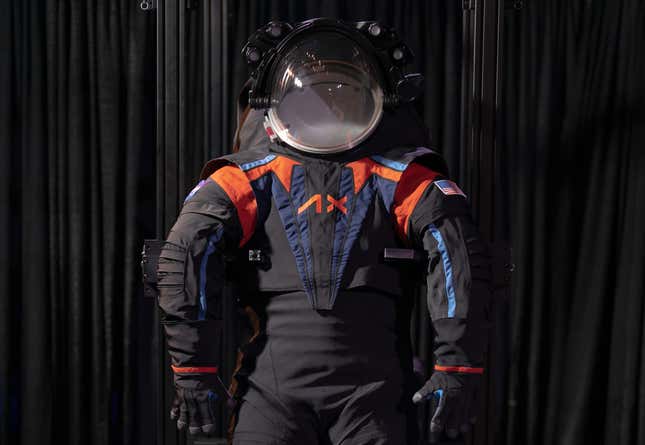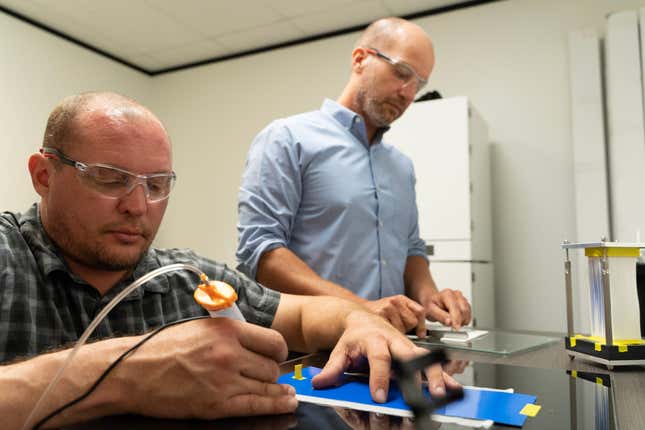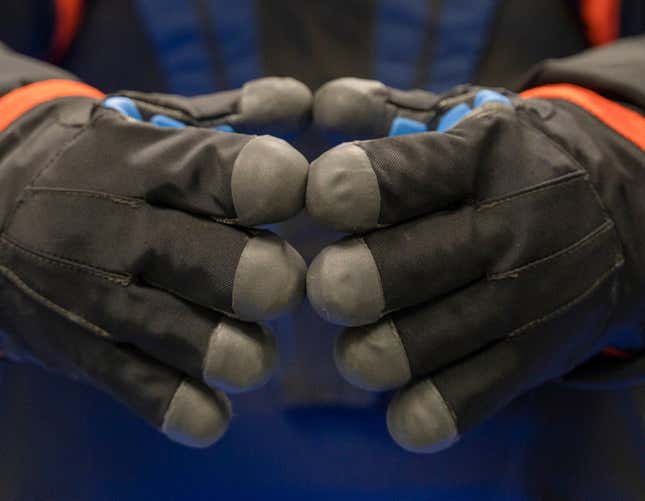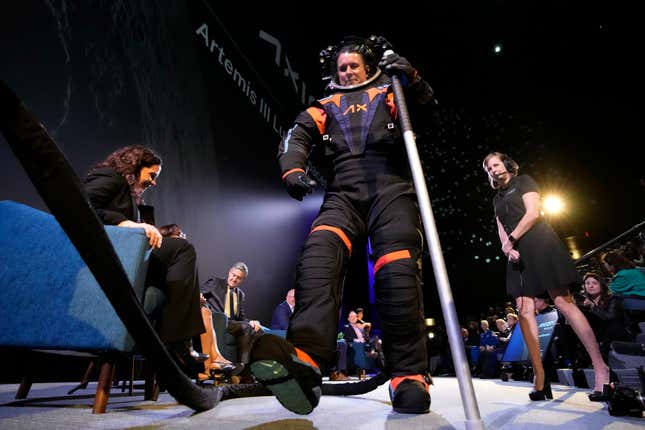
Axiom Space revealed its new Moon suit yesterday during an event held at NASA’s Space Center Houston. It’s the first Moon-specific suit since the Apollo era and a key component of NASA’s Artemis program, which seeks to return humans to the Moon later this decade. Here’s what we learned about the new suit, dubbed AxEMU.
Axiom Space chief engineer Jim Stein walked onto the stage yesterday wearing the suit, and I’ll admit to being impressed. The dark gray coverings aside, I felt that this was the suit I needed to see—something discernibly 21st century and even a bit sci-fi.














